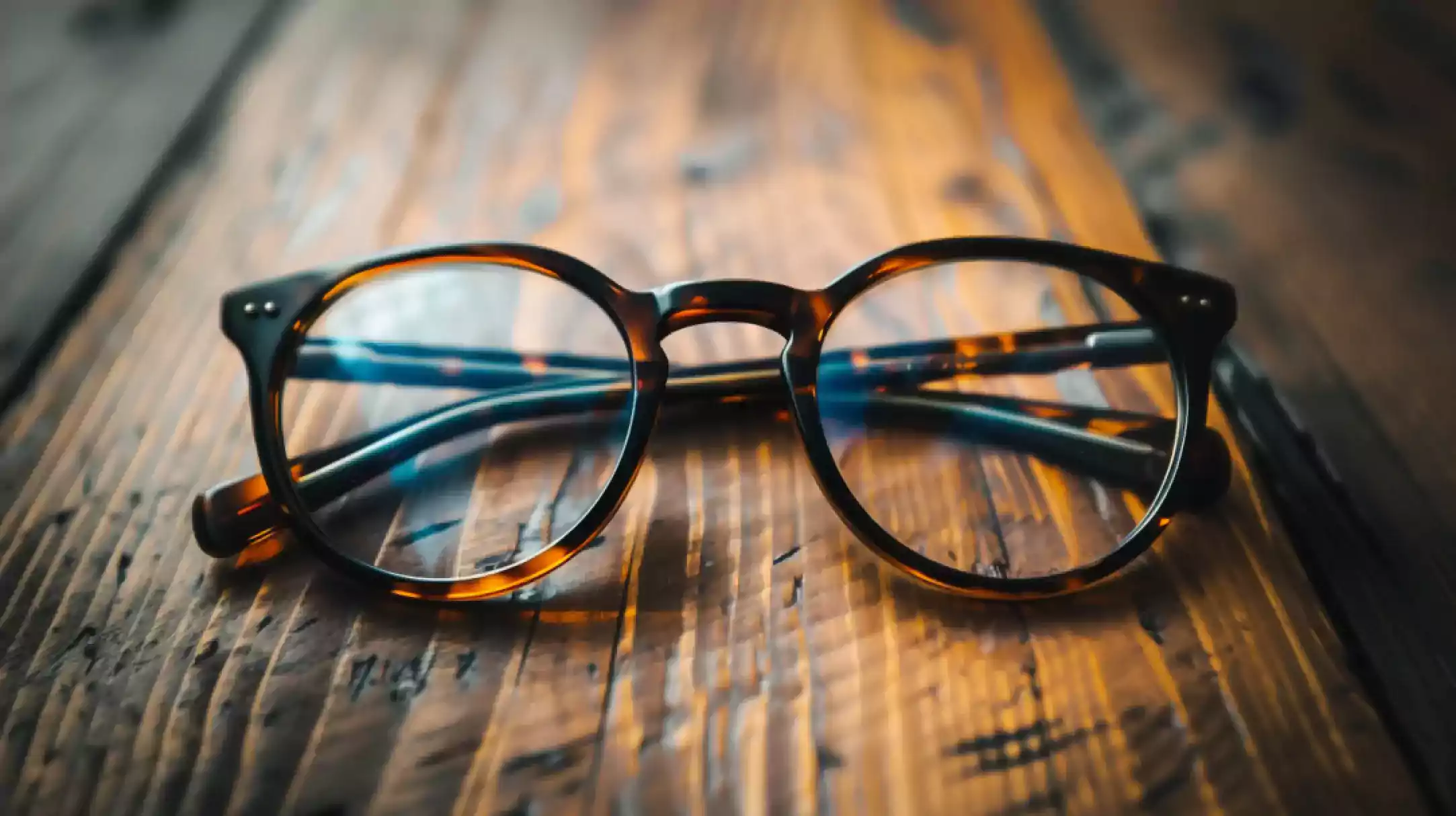The eyewear industry is at the forefront of integrating sustainability into its products, reflecting a growing commitment to environmental responsibility. Traditional materials are replaced with innovative alternatives, such as sustainable glasses made from LDPE plastic and recycled bottles, which offer reduced environmental footprints without compromising quality or style. From recycled plastics to biobased compounds, the sustainable materials used show how the industry transforms eyewear into a beacon of eco-friendly fashion.
The Materials Behind Sustainable Glasses
1. Recycled PET Bottles
Introduction to PET and Its Common Uses
Polyethylene Terephthalate (PET) is well-suited for eyewear due to its inherent strength and flexibility. PET's carries a level of clarity that ensures that the frames do not lose their lustre over time, maintaining a polished look. PET is also lightweight, which is effective in creating comfortable eyewear. Its recyclability is also a critical feature, aligning with the growing demand for sustainable fashion options.
Recycling Process
Initially, PET bottles are collected and sorted to ensure quality and purity. They are then cleaned to remove labels, caps, and other contaminants. The cleaned bottles are shredded into small flakes, which are melted and extruded into pellets. These pellets serve as the raw material for producing eyeglass frames. Advanced moulding techniques are applied to shape these pellets into durable and lightweight frames.
Environmental Benefits of Using Recycled PET Bottles
Utilising recycled PET in eyewear manufacturing conserves significant energy. It reduces reliance on non-renewable petroleum and requires considerably less water than producing virgin PET, offering substantial benefits in regions facing water scarcity. It emits fewer carbon emissions, supporting the fight against climate change. This shift towards using recycled materials helps minimise landfill waste and promotes a circular economy, where materials are reused and recycled, reducing the need for new material extraction. Additionally, the increased demand for recycled PET drives advancements in recycling technologies, enhancing process efficiency and effectiveness across various industries, further amplifying environmental benefits.
2. Nylon from Fish Nets
The nylon produced from recycled fishing nets is comparable in quality to virgin nylon and is durable and flexible. This resilience allows it to withstand significant stress and maintain its shape, making it ideal for everyday wear and more demanding physical activities. Additionally, nylon’s flexibility ensures a comfortable fit, adapting seamlessly to various face shapes without causing discomfort. These properties are critical for high-performance eyewear, which must perform reliably under diverse conditions and meet the highest sustainability and functionality standards.
3. LDPE in Packaging
Low-Density Polyethylene (LDPE) is used in the packaging of eyewear products, where its softer and more flexible properties make it ideal for providing a crucial barrier against moisture and dust. This ensures that the eyewear remains in pristine condition during storage and transport.
Sustainable Recycling of LDPE Plastic
LDPE plastic can be recycled with lower energy requirements than more rigid plastics like PET or PVC, enhancing the efficiency of the recycling process and significantly reducing the environmental impact associated with its production. LDPE can be repurposed into diverse products ranging from agricultural films to durable shopping bags, extending their lifecycle and reducing the need for virgin plastic production. The established recycling infrastructure for LDPE ensures that it is one of the more accessible materials for recycling endeavours, with widespread collection systems that facilitate its reuse on a global scale. This accessibility boosts LDPE's and also supports a more robust circular economy.
4. Biobased Plastics (M49, G850, G820)
Biobased plastics offer a sustainable alternative to traditional petroleum-based plastics by utilising renewable resources such as plant starches, cellulose, and biowaste. These materials are sourced sustainably and engineered to minimise the environmental footprint during their lifecycle. Unlike conventional plastics, biobased variants are structured to degrade more efficiently under proper conditions, reducing carbon emissions during production and long-term waste in landfills. The inherent properties of biobased plastics include lower greenhouse gas emissions during production and a decreased dependency on non-renewable oil reserves.
M49: M49 is a bioplastic derived from renewable resources like wood pulp and cotton fibres. It is renowned for its ability to break down more effectively under compostable conditions than traditional plastics. This biodegradability reduces its environmental footprint by minimising waste accumulation and facilitating easier recycling processes. In terms of performance, M49 matches the durability and flexibility required for high-quality eyewear, making it an ideal choice for consumers looking for eco-friendly options without compromising style or functionality.
G850 and G820: These are advanced biobased polyamides developed from castor oil, a highly renewable resource that does not compete with food crops for arable land. G850 and G820 are notable for their reduced greenhouse gas emissions during production. These materials exhibit superior durability and resistance to wear and tear, making them suitable for everyday eyewear demands. Their high optical clarity and mechanical strength performance allow manufacturers to produce environmentally responsible and durable frames for long-term use.
5. Sustainable Paper and Packaging
FSC-Certified Paper
The Forest Stewardship Council (FSC) certification ensures that paper products are sourced from forests and managed to uphold rigorous environmental, social, and economic standards. This certification supports biodiversity, reduces environmental impacts, and enhances the lives of forest-dependent communities through stringent social responsibility standards.
For the eyewear industry, using FSC-certified packaging reflects a commitment to sustainability. It aligns with increasing consumer demand for eco-friendly products and gives brands a competitive edge by showcasing a transparent, responsible supply chain. By choosing FSC-certified materials, eyewear companies help conserve natural resources and position themselves as leaders in sustainable business practices, appealing to a consumer base that values ethical and environmental responsibility.
Achieving Sustainable Goals with PEL
At PEL, we provide a one-stop service for the Carbon Neutrality of Products, including sustainable sunglasses. We offer a range of services that assess and verify the carbon footprint of eyewear products, including assessments of the materials used behind sustainable glasses. This assessment includes carbon emissions measurements, reduction strategies, offsetting options, and sustainability consulting.






.jpg)



